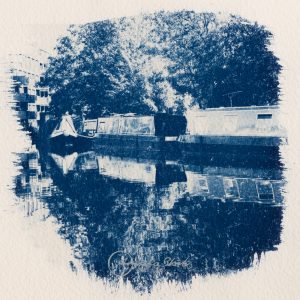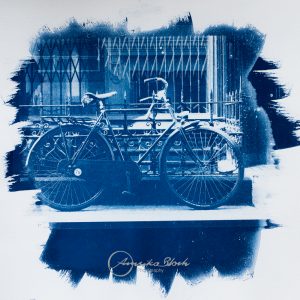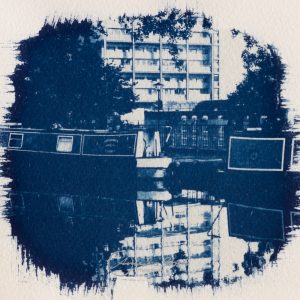Blue Prints
A vintage printing technique
One of my favourite products to offer you is to hand-craft your portrait as Blue Prints. This an 19th-century technique, called cyanotype printing, that involves coating fine art paper with a special liquid and exposing it in the sun. The result is a truly unique piece of art.
Our children grow up so quickly. Ideally, we want to preserve the memory of every precious moment forever. Professional family and children’s portraits are a great way to keep record of different stages of your little one’s childhood. Printing them as a Blue Prints will result in an image of timeless elegance. Consequently, they will be more than a snapshot in time, but an artful and treasured memory for many years to come. I am extremely proud that I can also offer to print your favourite image or images as Blue Prints on fine art paper.
What is a Blue Print?
The process I use in my images is called the “Cyanotype Process” and the resulting images are “Cyanotypes”. Originally, it was invented in 1842 by Sir John Herschel, an astronomer and scientist. He was just trying to find a way to copy his notes. However, the process was used one year later already by Anna Atkins in the first photographically illustrated book ever, a book about ferns.
How can I get my own unique Blue Print?
- You will be able to choose any of the images of your photo shoot to have turned into an art work. I am happy to advise you on which images would be most suitable.
- You then have the choice between smooth or textured art papers, giving very different impressions.The standard size of the images is 26cm x 36cm (paper size) but if you have a preference for a different size or format I am more than happy to accommodate this.
- Your cyanotype will look stunning in the beautiful crisp Prussian blue tones or toned to a more subtle brown/ grey
- Our bespoke framing service offers floating mount with wooden frames in a choice of styles and colours.
- Turn around time is usually around 6 weeks.
- Prices for the framed print start from £249
Most importantly, every Blue Print (or cyanotype) is a unique piece of art and hand-crafted to a high standard. They are the result of a chain of processes which lead to a single product that is one of its kind.
Therefore, having a Blue Print at home is truly unique and really stands out as something special.
Most importantly, every Blue Print (or cyanotype) is a unique piece of art and hand-crafted to a high standard. They are the result of a chain of processes which lead to a single product that is one of its kind.
Therefore, having a Blue Print at home is truly unique and really stands out as something special.
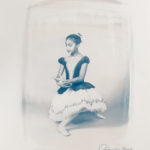


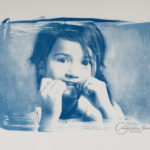
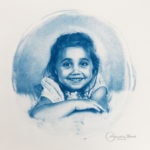
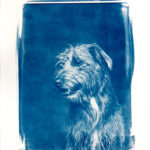
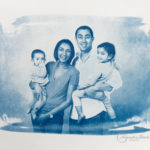
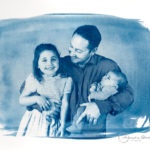
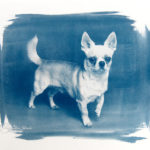

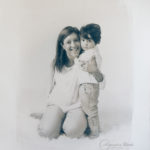

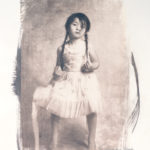

How do you hand-craft a portrait as Blue Print?
This might be a little technical. If you are interested in it, please read on. Should you have any questions regarding
the process, you are welcome to contact me and ask away! But if you just want to enjoy the pleasing aesthetic of the print without the burden of technicalities, that’s fine as well!
So, in essence, this is what needs to happen:
Creating a Negative
First I edit the digital image I want to print and converted it into a negative. These negatives are big! As big as the resulting image, so comparison to the images you might still have from your old 35mm film camera. One thing they do have in common, though: The better the negative, the better the resulting image.
Then comes the part that is proper handy craft.

Coating the Paper
The method I have to use for Blue Prints is called ‘contact printing’: I coat the fine art paper of the highest quality with an iron salt containing liquid (the sensitiser solution). Surprisingly, this starts light green. I need to avoid light in this step and dry the paper in the dark. Here it ‘matures’ into a slightly darker green.
Exposing the print in the sun
Once the paper is dry, I sandwich the negative onto the coated paper and secure it well so it doesn’t move. This bundle is then ready to see the sun. In autumn and winter I sometimes use a special UV light machine for this step. After all, the British weather is infamously unreliable. However, I do prefer to do this step out in the garden in natural sun light.
The print then changes in the sun, depending on how much light goes through the different areas of the negative. Getting the timing right is tricky and needs a lot of experience. This is especially true when all of a sudden clouds appear.
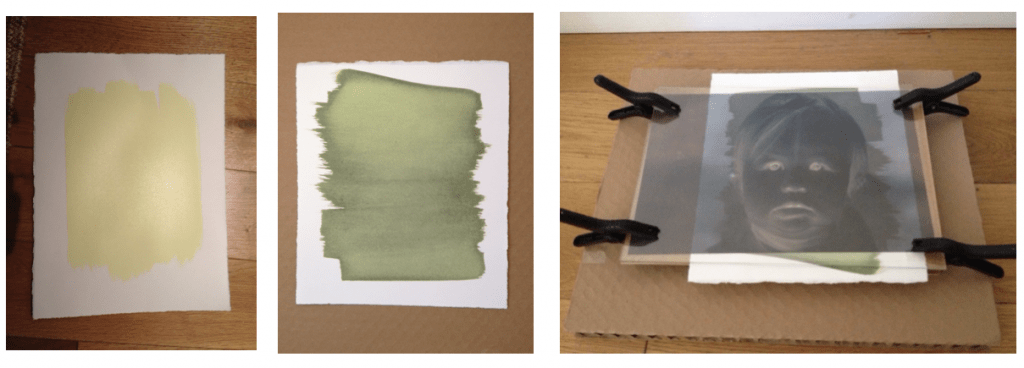
Washing the print
To begin with the image looks very different from what you would expect. The colours are grey, dark green and blue. In addition, the image might still look like a negative.
I have to immediately wash the print in a slightly acidic water bath. Yes, the whole paper is submerged and carefully washed. It is truly magical to see how the print slowly changes. After delicately but thoroughly washing the print I have to dry it again. At this stage, the print still doesn’t look like the final result. It only reaches its final Prussian Blue colour after about 24h.

The print is dry, what now?
After drying, I can still be bleach and tone the print to change the blue to a grey, purple or even brown tone. This step is quite unpredictable and really more of and experiment. In most cases, I do prefer the crisp blue anyway. However, there are some artists that create amazing images using toned cyanotypes.
Framing your Blue Print
In most cases the fine art paper has deckled edges. This means that the edges are not straight cut but look torn. For this reason, it looks particularly beautiful to have the print mounted floating. Here the paper edges are not hidden behind a presentation mount. Instead it looks stunning to display them floating in front of the backboard in a slightly deeper frame.
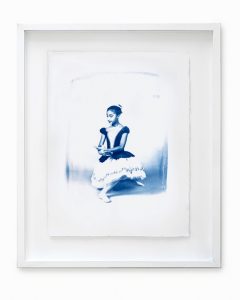
In short...
This means that there are lots of variables in the process that influence the end product and that no two images will be the same. You will end up with a unique image, hand-printed just like 170 years ago.

